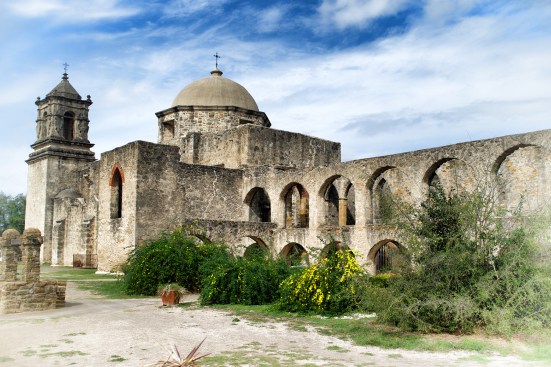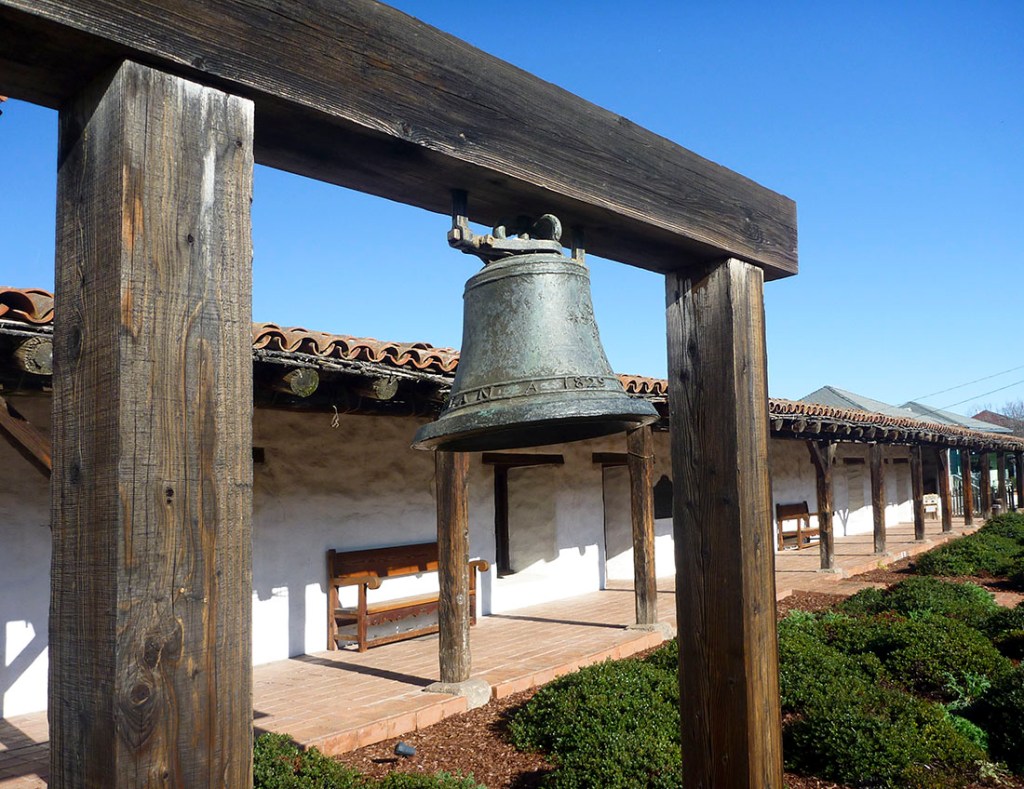The vernacular of the
American suburb is a mongrel. If you live Out There (as the majority of
Americans do), you will find yourself, depending on what part of the country
you inhabit, living in something that mixes elements from English country
buildings from the 18th century, Italian villas from the 17th century, French
farm buildings, city structures from the 19th century, Spanish Missions from
the 16th and 17th century, and a smorgasbord of Spanish, Japanese, and even
Indian (the origin of the bungalow) structures, all pared and dumbed down to
their most basic or minimal features, and used to cover and shape the same air-conditioned,
inwardly-turned box.

RedTail_Panther/Flickr via Creative Commons license
Mission San Jose, San Antonio.
In Southern California, what we generally call the Spanish Colonial Revival (SCR) is most prevalent. This last weekend, I spent some time in Riverside, Calif., with experts such as Pat Morton and Michael Burch, AIA, to try to uncover the roots of a vernacular variant that turned the southwestern United States into an Anglo version of Mexico long before the majority population of states such as California and Texas could trace their heritage to that country. I was there as part of a project that will lead to an exhibition on SCR architecture at the Riverside Art Museum in 2017, thereby contributing to the next round of the Pacific Standard Time (PST) exhibitions sponsored all around the Southland by the Getty.
The original impulses for the SCR were an attempt to learn from or appropriate the first structures non-native Americans had built in California: the Missions and Presidios. That meant stucco-covered, thick walls, courtyards, red tile roofs, ornamented doors and window openings, and the vertical punctuation of what were bell towers in the originals. Interior accoutrements trended toward crafts made by—or stolen from—Native Americans, regularized into classical motifs.
Mission Revival was the first style of the new Anglo elite, but over the years it became the way to house utilitarian structures and simple, small homes. Decoration disappeared, as did both the courtyard and the bell tower, leaving stucco boxes with little to distinguish them. It went down-market even as it became more associated with people actually from Mexico and elsewhere in Latin and South America.
The high style version of SCR became a pastiche of European, and mainly Andalusian elements, with admixture of motifs from both the rest of Spain and from Italy. Courtyards turned into terraced gardens, the stucco walls pushed in and out to create a plastic composition that owed as much to the Shingle Style as it did to the Alhambra, decoration moved from the doors to tile patterns slathered on floors, walls, and backsplashes, and staircases with a dramatic curved appeared as if out of nowhere.
These days, what you get depends on what you can afford. Most
homes are somewhere between an Andalusian romance and utilitarian version of
the Mission outpost, though their floor plans and building materials are the
same as what you would find in Chicago or Westchester, context and environment
be damned.
The places where this all started are beautiful. From the actual Missions to the Mission Inn (where we stayed during the trip)—itself a mongrel SCR/Arts & Crafts/Beaux-Arts Revival structure—the ability to make a place in the particular climate of California, and then adorn it in such a manner that you can feel at home in that place, is evident in these beautiful structures.
What has happened since then is less inspiring. But, it does make you think: If we could truly understand where the red tile tide came from, if we could find the roots of the stucco desert, could we find a way to make sprawl more sensible and more beautiful?
This post has been updated. The Mission San Jose is in San Antonio. ARCHITECT regrets the error.
